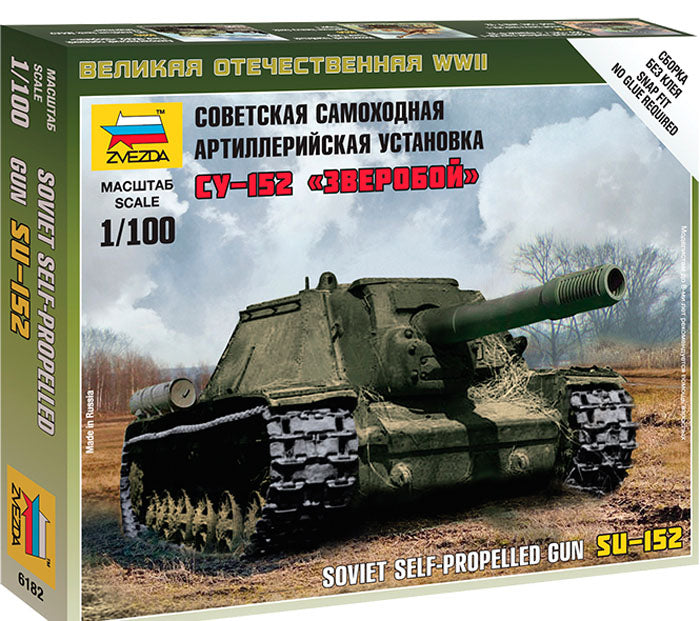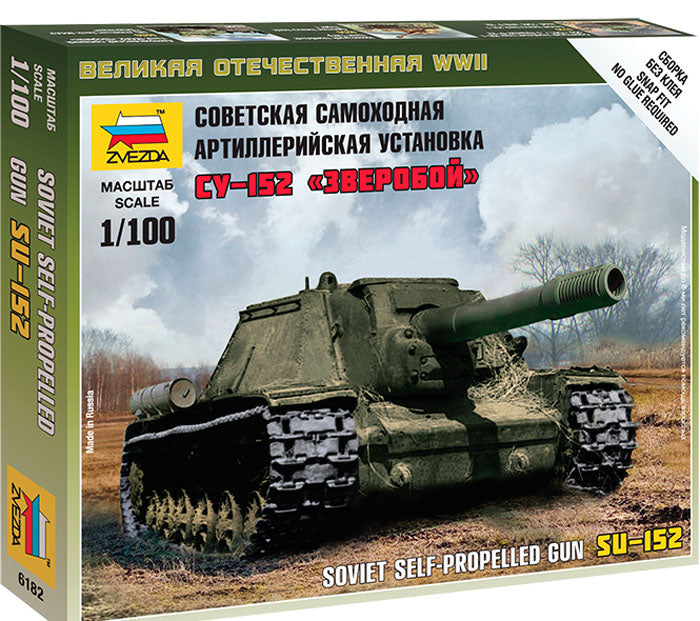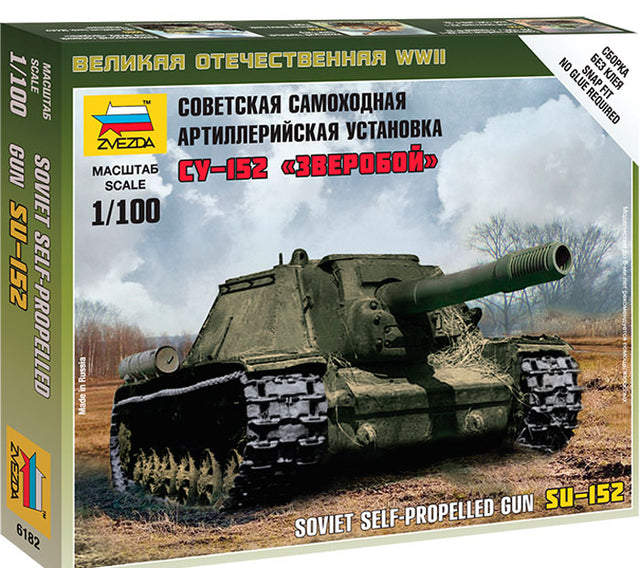Zvezda 1:100 Self Prop Gun SU-152
Zvezda 1:100 Self Prop Gun SU-152 is backordered and will ship as soon as it is back in stock.
Couldn't load pickup availability
Delivery and Shipping
Delivery and Shipping
We use tracked courier for fast delivery New Zealand wide
Description
Description
The SU-152 (Russian: самоходная установка-152, СУ-152, romanized: Samokhodnaya Ustanovka-152) is a Soviet self-propelled heavy howitzer used during World War II.
It mounted a 152 mm gun-howitzer on the chassis of a KV-1S heavy tank. Later production used an IS tank chassis and was re-designated ISU-152. Because of its adopted role as an impromptu heavy tank destroyer, capable of knocking out heavy German armoured vehicles such as the Tiger and Elefant, it was nicknamed Zveroboy ("Beast Slayer").
The Stalingrad counteroffensive, Operation Uranus, exposed the Red Army's urgent need for mobile heavy guns to destroy German fortifications. At the time Soviet front-line ground units did not possess sufficient firepower to deal with pillboxes and other fortifications.
Close support of artillery and combat engineers was an important factor in the success of Operation Uranus. However, with rare exceptions, Soviet guns and howitzers at this time were towed rather than self-propelled. This lack of mobility was exacerbated by the absence of roads, the presence of deep snow and a scarcity of artillery tractors.
Towed guns were also vulnerable to counterattack while moving, especially since they were often hauled by horses or their crews. The 152 mm heavy howitzers were particularly difficult to maneuver owing to their great weight. They were incapable of crossing rivers on anything but tank bridges and were prone to being abandoned after becoming mired.
In November 1942, the State Defense Committee therefore ordered the development of a heavy self-propelled gun with a 152.4mm ML-20 howitzer. The Red Army needed a vehicle that could be mass produced to supplement the SU-100Y with its 130mm gun.
The Red Army had dedicated anti-fortification vehicles in the pre-war period, such as the KV-2 heavy tank armed with the 152.4 mm M-10 howitzer. However, mass production of KV-2s ceased in October 1941, when the Kirov Works had to be evacuated from Leningrad to Chelyabinsk. An unknown number were still operating in 1942.
The new anti-fortification vehicle was designed with the same purpose in mind, but with higher mobility, heavier armor, reduced production cost, and the more powerful and accurate ML-20 152mm gun. Mounting the ML-20 in a turret was impossible due to its length and recoil, and it was decided that the new vehicle should have a non-rotating gun mounted in a fixed casemate-style superstructure.
1:100 scale plastic assembly kit. Snap kit no glue required.
Payment & Security
Payment methods
Your payment information is processed securely. We do not store credit card details nor have access to your credit card information.




